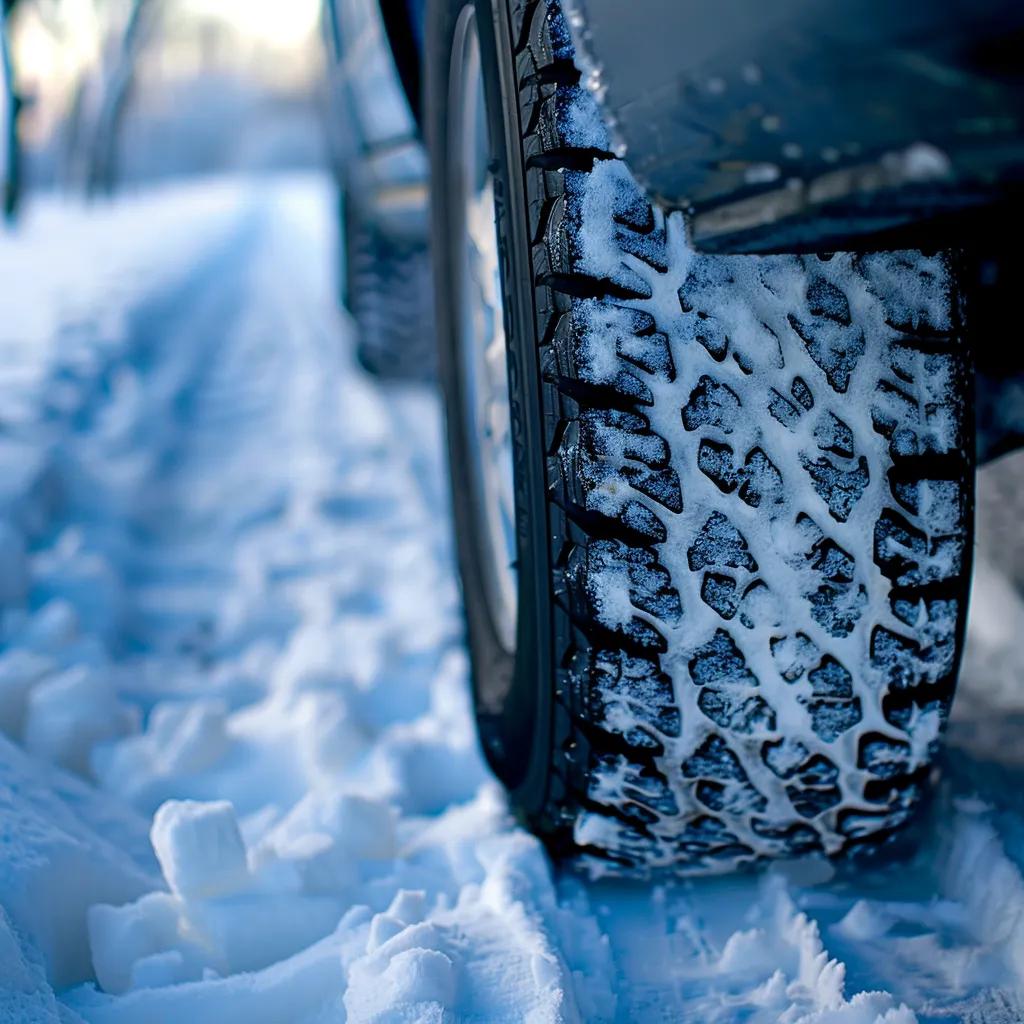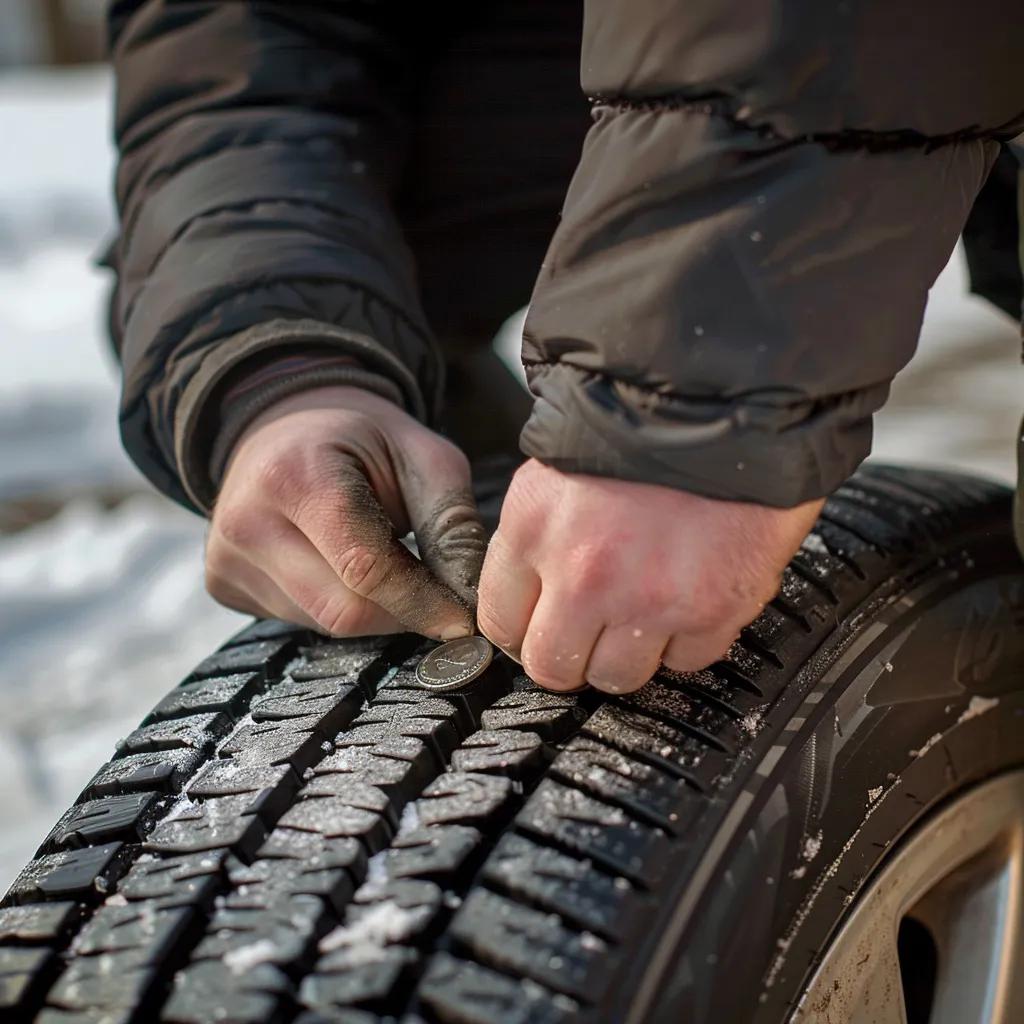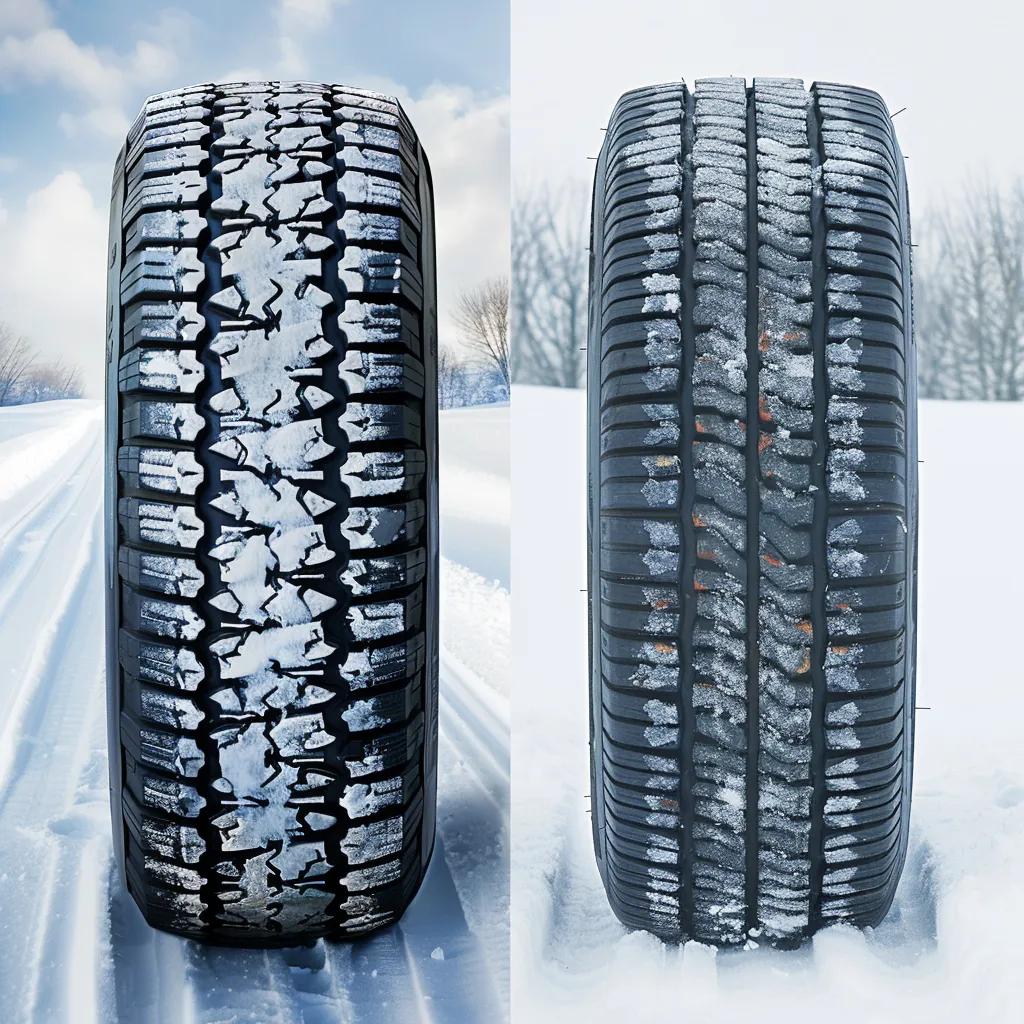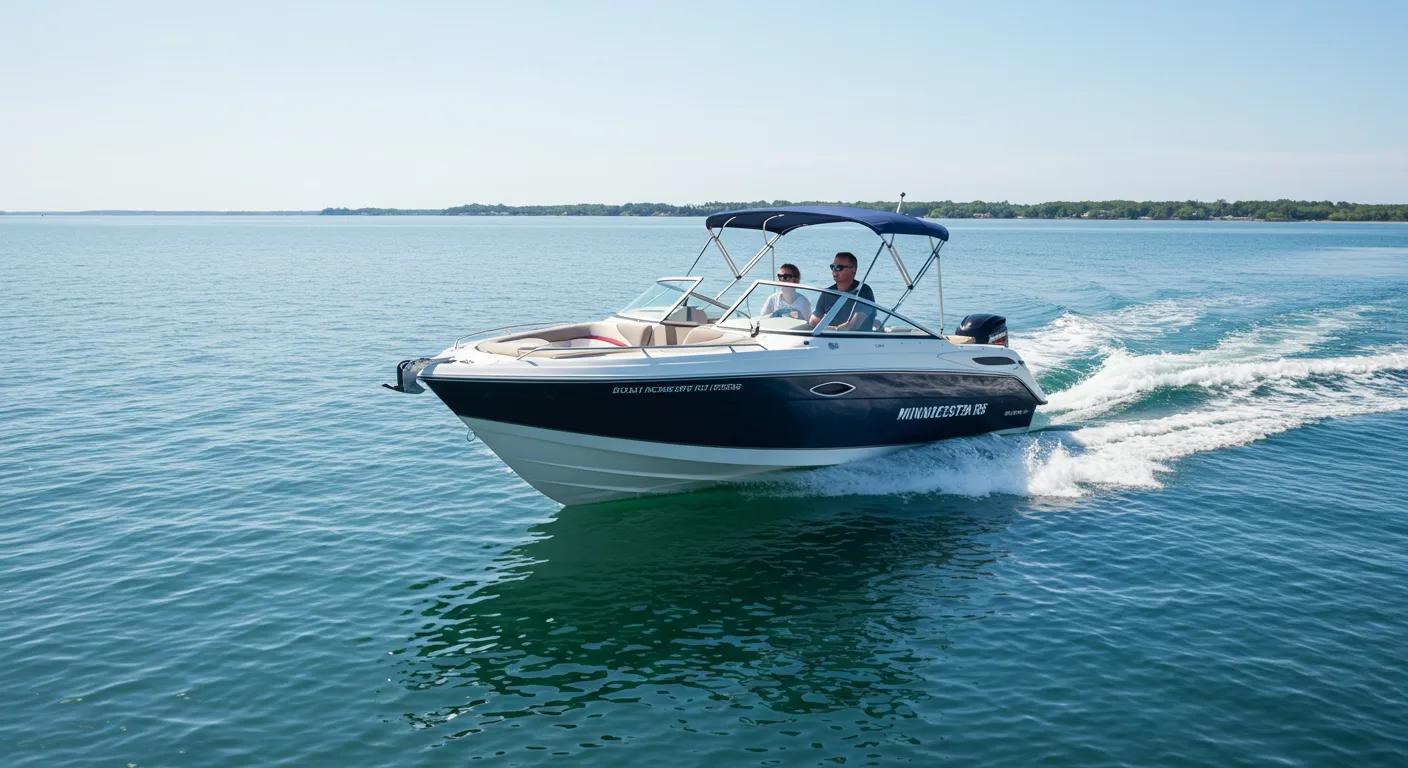Boat insurance in Minnesota is essential for registration. Learn about requirements, types of coverage, and how to protect your investment today!
Worn Tires in Winter: The Hidden Risk of Insurance Claims

How Worn Tires Cause Accidents and Impact Insurance Claims in Minnesota
Every winter in Minnesota, tires worn below safe tread depths become a leading factor in loss-of-control crashes and costly insurance claims. Drivers who underestimate the dangers of bald or unevenly worn tires face extended stopping distances, hydroplaning on slush-covered roads, and blowouts on icy highways. In this guide, you will learn:
- What safety risks worn tires create under Minnesota’s winter conditions
- How state law defines legal tread depth and the penalties for non-compliance
- When bald tires trigger negligence findings and affect liability
- The influence of tire condition on claim approvals, denials, and coverage types
- Practical inspection methods, maintenance schedules, and tire choices for icy roads
- Key statistics, expert insights, and local resources for tire safety and insurance support
Understanding tire safety is essential for protecting yourself, your passengers, and your insurance record on Minnesota’s roads.
What Are the Risks of Driving on Worn Tires in Minnesota?
Driving on tires with inadequate tread depth directly undermines traction, steering control, and braking performance, which sharply increases collision likelihood on wet or slippery roads. Recognizing these risks prevents avoidable crashes and preserves vehicle stability under winter hazards.
How Does Tire Tread Depth Affect Traction and Control?
Tire tread depth measures the groove height that channels water, snow, and slush away from the contact patch, directly improving grip and steering responsiveness.
- Channels water to reduce hydroplaning
- Maintains flexible tread blocks for bite on ice
- Disperses slush to prevent skidding across wet surfaces
Reduced tread depth raises stopping distances by up to 25%, compromising cornering and emergency maneuvers in freezing rain. Preserving adequate grooves ensures consistent traction and driver confidence.
This traction loss spills into specific accident types that worn tires precipitate on Minnesota highways.
What Are Common Accident Types Caused by Worn Tires?
Below is an overview of the most frequent crash scenarios linked to low-tread tires:
| Accident Type | Primary Mechanism | Typical Outcome |
|---|---|---|
| Hydroplaning | Water trapped under tread | Sudden loss of steering |
| Skidding | Inability to clear slush | Vehicle spins or fishtails |
| Blowouts | Tire puncture under load | Rapid deflation and rollover |
| Rear-end Collisions | Extended braking distance | Impact at low-medium speeds |
These failures often cascade on icy roads where a small loss of grip leads to multi-vehicle pileups. Preventing these common accidents begins with legal compliance and vigilant inspections.
How Do Minnesota Winter Conditions Increase Tire-Related Accident Risks?
Minnesota’s freeze-thaw cycles and heavy snowfall compound tire wear challenges by introducing extreme temperature swings and wet-ice patches that accelerate tread deterioration.
- Prolonged exposure to sub-zero temps hardens rubber compounds
- Frequent snowplow operations subject tires to surface irregularities
- Meltwater refreezing creates hidden black ice under thin tread
- Extended road salt exposure accelerates sidewall cracking
These climate stressors amplify the dangers of worn tires, making legal requirements and proactive maintenance critical before the next snowfall.
What Are Minnesota’s Legal Requirements for Tire Tread Depth?
Minnesota Statute 169.723 sets enforceable standards for non-commercial vehicle tread depth to maintain roadway safety and reduce winter crash rates. Complying with these rules preserves legal standing and insurance integrity.
What Is the Minimum Legal Tread Depth in Minnesota?
Minnesota law requires a minimum tread depth of 2/32 inch in the center groove of each tire, measured at three distinct points around the tire circumference.
- Measurement standard: centermost groove in three locations
- Enforcement tool: law enforcement and safety inspectors
- Benefit: establishes baseline traction in wet or icy conditions
Legal Requirements for Tire Tread Depth in Minnesota
Minnesota law requires a minimum tread depth of 2/32 inch in the center groove of each tire, measured at three distinct points around the tire circumference [2].
This legal standard, as defined in Minnesota Statute 169.723, establishes the baseline for safe tire operation in the state.
Maintaining more tread than the bare legal limit further enhances safety under Minnesota’s unique winter driving demands.
How Do Recommended Tread Depths Improve Safety Beyond Legal Limits?
Safety experts advise replacing tires at 4/32 inch of tread to significantly improve water-slush evacuation and braking performance.
- Mechanism: deeper grooves clear water faster
- Benefit: up to 30% shorter stopping distances in wet slush
- Rationale: proactive replacement cushions against measurement errors
Observing higher thresholds than the legal floor reduces hydroplaning risk and provides a buffer for inspection variability.
What Are the Consequences of Violating Minnesota Tire Laws?
Operating with illegal tread depth can trigger fines of up to $200 per tire and liability in civil suits when tire condition contributes to a crash.
- Fines issued by state patrol or local law enforcement
- Liability: negligence findings in at-fault determinations
- Insurance impact: potential claim denial for unroadworthy vehicle
Law-mandated tread standards protect all drivers; ignoring them exposes you to financial and legal repercussions.
How Does Worn Tire Condition Affect Accident Liability in Minnesota?
When worn tires directly contribute to a collision, courts may assign fault based on negligence in tire maintenance, shaping compensation and responsibility. Understanding liability rules helps drivers mitigate exposure.
When Can Bald Tires Make You the At-Fault Driver?
Drivers who neglect to replace excessively worn tires breach their duty of care, enabling courts to attribute full fault when tire failure precipitates a collision.
- Negligence element: knowledge or constructive notice of tire condition
- Outcome: full compensation liability to injured parties
- Preventive measure: regular inspections to document safe tread levels
Accepting responsibility for tire upkeep preserves safety and limits at-fault judgments.
How Is Comparative Negligence Applied in Minnesota Tire Accident Cases?
Minnesota’s comparative negligence rule allows fault to be allocated proportionally based on each party’s contribution to the accident.
- Mechanism: jury or judge assigns percentage fault
- Benefit: reduces financial liability when other factors share blame
- Example: driver with 30% tire-related fault seeks 70% recovery from other driver
This shared-fault system encourages all drivers to maintain tires and drive defensively.
Who Else Can Be Liable for Tire-Related Accidents?
- Tire Manufacturers – design or material defects
- Auto Repair Shops – negligent mounting or balancing
- Fleet Operators – failure to rotate or replace under-worn tires
Holding these parties accountable provides alternate recovery paths when driver negligence is not the sole cause.
How Do Worn Tires Influence Insurance Claims After an Accident in Minnesota?
Insurance carriers evaluate tire condition to determine policy applicability, claim validity, and potential denial under “unroadworthy vehicle” clauses. Clarity on coverage types helps drivers manage financial exposure.
When Can Insurance Claims Be Denied Due to Tire Condition?
Insurers may deny collision or comprehensive claims when investigation reveals that worn tires created an unroadworthy condition that directly caused or contributed to the loss.
- Unroadworthy definition: unsafe mechanical condition
- Investigation: post-accident inspection reports
- Benefit: insurers avoid paying for negligent maintenance losses
Understanding denial triggers empowers drivers to document regular tire care and maintain coverage integrity.
What Types of Coverage Apply to Tire-Related Accidents?
Insurance policies may respond differently depending on accident cause and tire condition:
| Coverage Type | Definition | Typical Benefit |
|---|---|---|
| Collision | Damage from vehicle-to-vehicle crashes | Repairs or replacement after qualifying crash |
| Comprehensive | Non-collision losses (e.g., storms, vandalism) | Coverage for blowouts or tire theft |
| Roadside Assistance | Emergency services for disabled vehicles | On-site tire change or towing for flat/bald tires |
With coverage types in mind, defining “roadworthiness” solidifies policyholder duties.
How Is “Roadworthiness” Defined in Minnesota Insurance Policies?
Roadworthiness clauses require vehicles to be maintained in safe operating condition, including adequate tire tread, tire pressure, and absence of structural defects.
- Policy requirement: adherence to manufacturer maintenance schedules
- Inspection criteria: certified mechanic or insurer-appointed adjuster
- Benefit: preserves eligibility for payouts and roadside benefits
Meeting these criteria shields you from claim disputes and coverage gaps.
How Can Minnesota Drivers Prevent Accidents Through Proper Tire Maintenance?
Regular inspection and proactive maintenance optimize tire performance and minimize liability, especially during Minnesota’s harsh winters.
How Do You Check Tire Tread Depth Using the Penny and Quarter Tests?

Performing simple coin tests lets drivers verify tread depth without special tools:
- Insert a U.S. penny into the tread groove with Lincoln’s head upside down.
- If Lincoln’s head is fully visible, the tread is below 2/32 inch and requires replacement.
- For a 4/32-inch check, insert a quarter with Washington’s head down; full visibility indicates worn tread.
These quick inspections empower drivers to spot unsafe tires before an accident risk escalates.
Maintaining correct tire pressure and rotation schedules further extends safe tread life.
What Is the Recommended Tire Pressure and Rotation Schedule in Minnesota?
Adhering to manufacturer-recommended pressure (typically 30–35 PSI) and rotating tires every 5,000–7,500 miles promotes even wear and consistent traction.
- Benefit: balanced tread wear and improved fuel efficiency
- Mechanism: front-to-rear and cross-rotation patterns
- Verification: monthly pressure checks and semiannual service
Which Tires Are Best for Minnesota Winters: Winter vs. All-Season?

Winter tires use specialized rubber compounds and tread designs to deliver superior grip in temperatures below 45 °F, outperforming all-season tires on ice and snow.
| Tire Type | Key Feature | Winter Performance | Value Proposition |
|---|---|---|---|
| Winter Tires | Softer compound, deep grooves | Excellent ice and snow grip | Enhanced safety on frozen roads |
| All-Season | Balanced design | Adequate in light snow | Convenience for year-round driving |
Safe driving habits complement well-maintained tires to reduce winter collision exposure.
What Safe Driving Practices Reduce Tire-Related Accident Risks in Winter?
- Increase following distance to allow extra stopping room
- Reduce speed on icy bridges and shaded areas
- Avoid sudden braking or sharp steering inputs
- Use gentle throttle application when accelerating on snow
What Are the Latest Minnesota Tire Safety Statistics and Expert Insights?
How Many Accidents Are Caused by Worn Tires in Minnesota Annually?
Approximately 12,000 Minnesota collisions each year cite bald or under-inflated tires as a contributing factor, representing nearly 17% of all winter crashes. This frequency underscores the urgent need for regular tread inspections.
Minnesota Tire Safety and Winter Crashes
Approximately 12,000 Minnesota collisions each year cite bald or under-inflated tires as a contributing factor, representing nearly 17% of all winter crashes, highlighting the need for regular tread inspections [1].
This statistic from the Minnesota Department of Public Safety underscores the significant impact of tire condition on winter driving safety within the state.
What Do Minnesota Law Enforcement and Insurance Experts Say About Tire Safety?
Traffic safety officials stress that worn tires become the decisive factor in many slide-off collisions, while insurance adjusters note that claim denials often follow findings of illegal tread depths. Case examples demonstrate how documented maintenance logs can sway liability determinations.
Expert Insights on Tire Safety
Traffic safety officials stress that worn tires become the decisive factor in many slide-off collisions, while insurance adjusters note that claim denials often follow findings of illegal tread depths [3].
This insight from the Insurance Institute for Highway Safety emphasizes the critical role of tire maintenance in preventing accidents and ensuring insurance coverage.
How Do Tire-Related Accidents Impact Insurance Claims Trends in Minnesota?
Claims data reveals that accidents linked to unroadworthy tires lead to 25% higher denial rates and average premium increases of 12% on renewal. These trends highlight the financial incentive for proactive tire care.
Where Can Minnesota Drivers Find Resources and Support for Tire Safety and Insurance?
What Official Minnesota Agencies Provide Tire Safety Information?
State agencies offer free resources on legal requirements and winter driving safety:
- Minnesota Department of Public Safety (MnDPS) publishes annual crash reports and safety bulletins
- Minnesota Department of Transportation (MnDOT) issues road condition alerts and maintenance tips
- Minnesota Legislature website provides full text of Statute 169.723
How Can Drivers Access Legal and Insurance Assistance for Tire-Related Accidents?
Experienced personal injury attorneys and insurance claims advocates can help interpret liability findings, contest claim denials, and negotiate fair settlements when tire condition is disputed.
Building a file of inspection records, service invoices, and accident photographs strengthens your case.
What Online Tools Help Monitor Tire Condition and Insurance Coverage?
Smartphone apps and digital checklists streamline tire care and policy tracking:
- Tire maintenance apps prompt monthly tread and pressure checks
- Insurance portals let you review coverage types and deductible options
- Weather-based alerts recommend when to switch to winter tires
Proper tire maintenance, legal compliance, and defensive winter driving collectively prevent accidents and preserve insurance integrity in Minnesota’s challenging conditions. By performing simple inspections, understanding liability rules, and selecting appropriate coverage, you protect your safety and wallet on icy roads. Take action today: check your tread depth, adjust your driving habits, and consult professionals to keep your policy in good standing on every Minnesota winter journey.
Author: Nathan Betters Insurance Agency, NPN number 17401760



